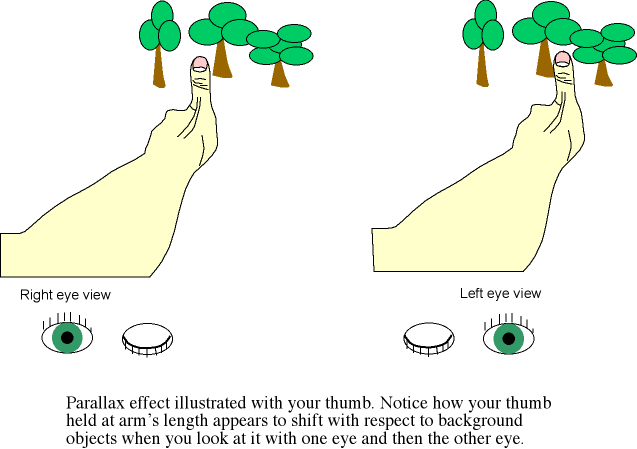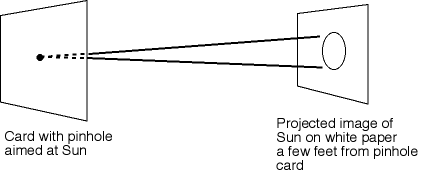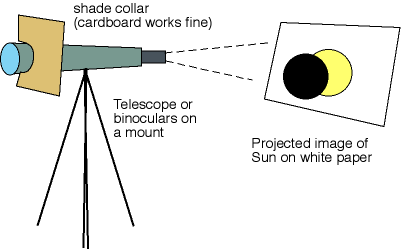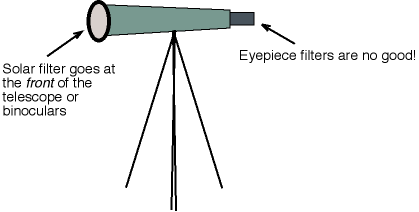
Originally written for the William M Thomas Planetarium's website in June 2012.

On Tuesday, June 5th Venus will cross the face of the Sun from 3:06 PM to 9:45 PM as seen from Bakersfield—see the graphic above. The graphic shows the path that Venus will take across the Sun as seen during our afternoon, as well as, how big (er, small) Venus will appear on the Sun's disk. The next time Venus will transit the Sun as seen by anyone on the Earth will be in 105 years, in the year 2117. On June 5th, all of North America, all of Central America and northwestern South America will be able to view the transit in our hemisphere. Most of Europe, eastern half of Africa, all of Asia and Australia will be able to see it during their morning of June 6th (remember that they are many timezones ahead of us). See the "Viewing the Sun Safely" section below for how to safely view the Sun during the transit. Only special solar filters are safe enough for directly looking at the Sun—dark sunglasses, even several put together, are NOT safe for your eyes! Here in Bakersfield, the Kern Astronomical Society will have solar telescopes set up at Russo's Books in the Marketplace Mall from a little before 3 PM to sunset. Stop by for a look! It won't happen again for another 105 years.
Besides being an extraordinarily rare phenomenon, Venus transits hold a special place in the history of finding the scale of the universe. Using trigonometry, astronomers centuries ago were able to figure out the proportional spacing of the planets in the solar system all relative to the Earth's distance from the Sun. They knew, for example, that Mars is 1.5 times farther from the Sun than is the Earth, Jupiter is 5.2 times farther from the Sun than is the Earth, etc. What they didn't know was the actual distance between the Earth and the Sun. The Earth-Sun distance is also needed in finding the distances to the stars. In the 1830s, astronomers were able to determine distances to the stars using the parallax effect and trigonometry.

The basic idea behind parallax and using it to calculate distances (which is the name of the main game in astronomy) can be illustrated using your thumb. Hold your thumb up in front of your face about 6 inches from your nose and look at it with one eye and then the other. The thumb will appear to move with respect to whatever's in the background---that's the parallax effect. Do the same thing with your thumb held at arm's length and you'll notice that the parallax is smaller. If you did not know the distance to your thumb but you knew the distance between your two eyes, you could get the distance to your thumb by measuring how much of an angle by which your thumb shifted (get a protractor) and some trigonometry.
For the stars, we look at the nearby stars from opposite sides of the Earth's orbit and measure the size of the parallactic shift. Once you know a couple of angles and the length of one side of a triangle, you can get the rest of the triangle sides. The side of the triangle for the stars we need to know is the distance between the Earth and the Sun. Once we have the distances to the nearby stars, we use them to calibrate methods of finding distances for more distant objects such as the rest of the stars, nebulae, galaxies, quasars, etc. In order to determine the masses, 3D motion, sizes (diameter and volume), reflectivity, power output, and other properties of the planets, stars, the Milky Way, and other galaxies and compare them with the Earth we need to determine their distances. Their distances are also critical for determining the ages of the stars and the galaxies in which they reside plus finding out the age of the universe. When you trace all of this line of reasoning back to the start, you see that it comes back to knowing the distance between the Earth and the Sun. It is the fundamental baseline for our knowledge of the universe—the Astronomical Unit.
Edmund Halley (of Halley's Comet fame) figured out a way to use the parallax effect and trigonometry in determining the Astronomical Unit. His idea involves very careful time measurements of how long it takes to travel across the face of the Sun as seen from various parts of the Earth. Those different timings can be used to calculate the parallax angle of Venus and trigonometry gives us the distance to Venus and the distance from the Earth to the Sun follows from the proportional spacings of the planets worked out by Copernicus and Kepler. Nowadays we use radar to get the distance to Venus and trigonometry then gives us the distance to the Sun if we also measure the angular separation of Venus from the Sun on our sky when we do the radar measurement. (Trigonometry sure comes in handy!) Using radar to directly measure the distance to the Sun wouldn't work because the radio waves would get absorbed by the gas and the Sun's own radio emission would overwhelm any weak reflected radio wave anyway.
On June 5th you can participate in a 2012-version of Halley's method with your smartphone (iPhone or Android) by simply tapping the screen when you see Venus is all the way inside the one edge of the Sun and/or just touching the far edge of the Sun (when seen through your own solar filter or projected image). The phone app also has a simulation mode to enable you to practice using the app well before the time of the transit. Your observations will be combined with thousands of other observers from all over most of the world. Go to http://transitofvenus.org to download the phone app. Those of you without a smartphone or cannot make it to the KAS Venus Transit party at Russo's but have access to the web can participate in the transit events at NASA's Transit of Venus website and Astronomers Without Borders Transit of Venus website. The NASA site will have a webcast from Hawaii as will the The Exploratorium. However, do not use the transit phone app with the webcasts unless you happen to be at the specific Hawaii sites from which the webcasts are taking place! The transit phone app is to be used to log Venus timings as seen from your location.
The Sun is extremely bright and you can damage your eyes within a few seconds if you look at the Sun without protection. To view the Sun during a partial or annular eclipse or planet transit you need to either look at a projection of the Sun or use a special-purpose solar filter—very dark sunglasses do NOT protect your eyes. Other things to NOT use (they are NOT safe) include: smoked glass, stacked sunglasses, crossed polarizing shades, photographic neutral-density filters, or a filter designed to block visible light for infrared pictures. The items in the previous sentence do not block the UV or IR that can also damage your eyes. What follows are safe ways of viewing the Sun.
The simplest thing to use is a pinhole projection. Poke a hole in an index card with a thumb tack or sharp pencil, face the card toward the Sun and hold a second card three or four feet behind it in the front card's shadow. A big hole makes a bright but fuzzy image and a small hole made a dim but sharp image. You can reduce the daylight glare on the viewing card by enclosing the setup in a long box.

A sharper and bigger Sun image can be made by projecting the Sun's image through a small telescope or binoculars onto a white card behind the telescope or binoculars. Do NOT look through the telescope or binoculars without a special-purpose solar filter! You will need to have the telescope or binoculars on a mount. Point the telescope or binoculars toward the Sun using the device's shadow. When you are pointed at the Sun, the telescope's shadow will be smallest. At that time a bright image of the Sun will shine from the eyepiece onto the card. Turn your focus knob and adjust the distance of the card from the telescope until the Sun is sharp and as big as you want. The graphic below shows the Sun during a solar eclipse (with the dark New Moon).

For direct viewing you can use an arc-welder's glass of shade #14 (NOT a lower-numbered shade) or special "eclipse glasses". High-quality and safe but inexpensive eclipse glasses are available from Thousand Oaks Optical and Rainbow Symphony, both U.S. manufacturers. The best views are through a properly-filtered telescope. The Kern Astronomical Society will have solar-filtered telescopes set out at Russo's Books in the Marketplace Mall from a little before 3 PM to sunset on June 5th.

Solar filters for your telescope or binoculars can be found at Astro-Physics, Thousand Oaks Optical, and Orion Telescopes & Binoculars. The solar filters come as either wispy sheets of metallized film, metallized black polymer plastic, or metallized glass with the metallized film ones usually providing the very best view but all being very good. These filters fit over the front of the telescope or binoculars. Do NOT use small filters that fit over the eyepiece since the magnified and concentrated sun's energy can easily shatter an eyepiece filter (and then fry your eyeball). Below are some pictures I took with a solar filter of metallized film over a 300-mm telephoto lens with a 1.4X extender (so effective focal length 420 mm) from Bakersfield in late afternoon. Select the images to bring up a full-size image.
 Large sunspot group now almost all rotated away from us—look at 5 o'clock position at the edge. |
Below are other websites to check out for observing the Sun and more details about the Venus Transit of the Sun.
Posted to Astronomy Notes: October 11, 2014 (Page last updated: August 13, 2012 -- links were correct at that time)